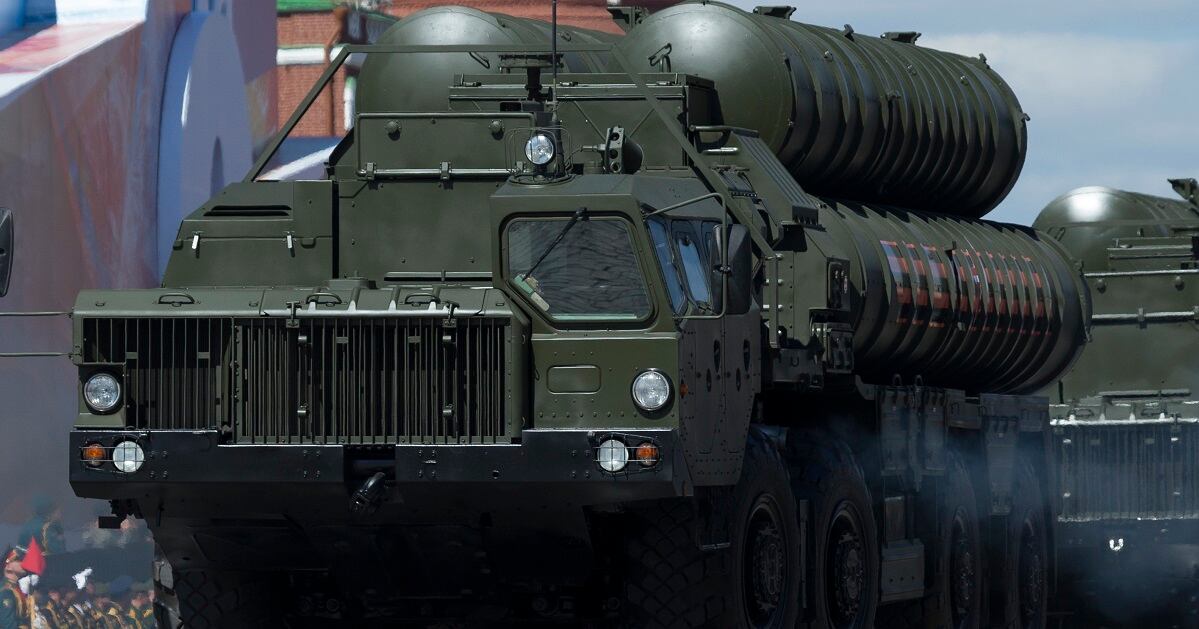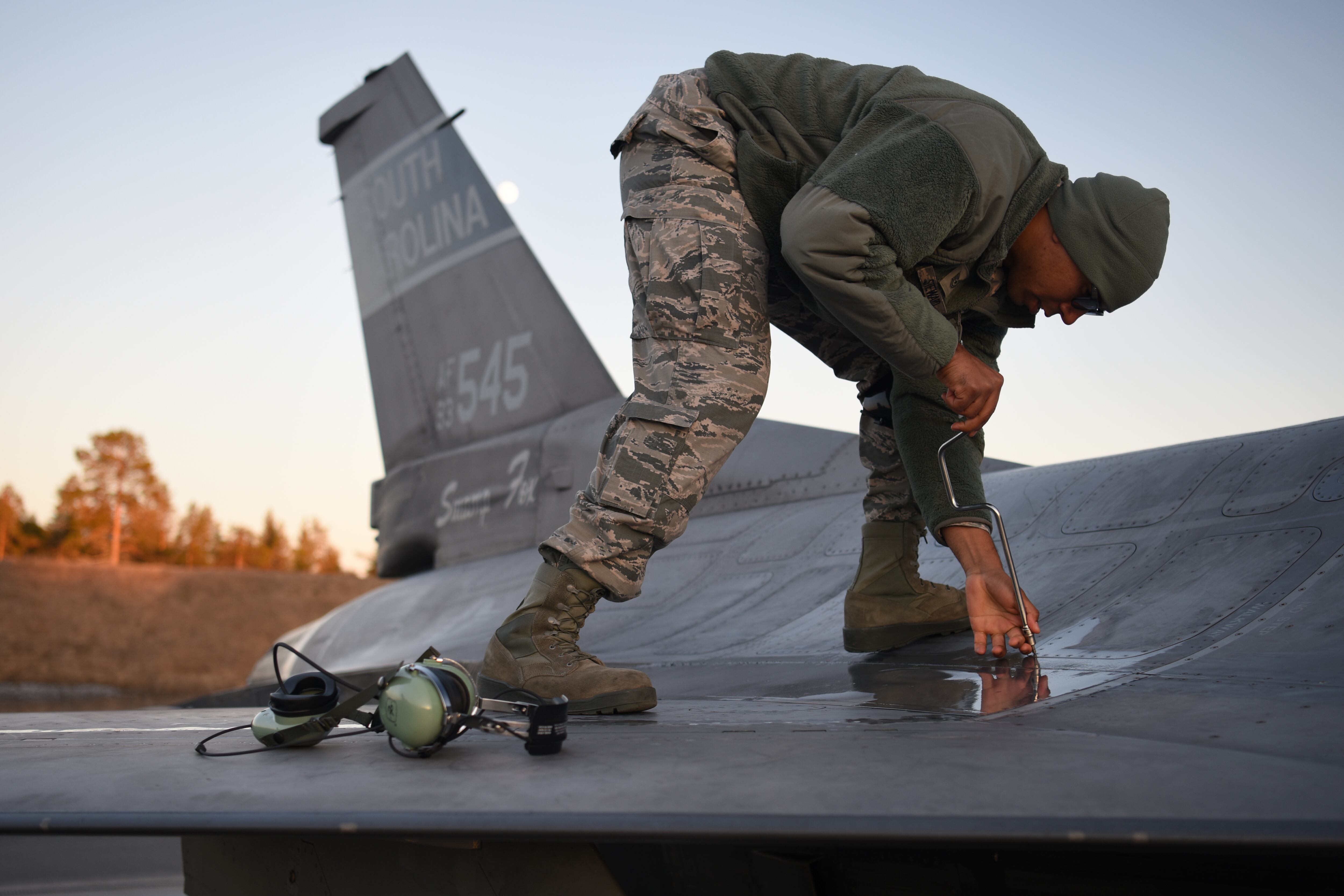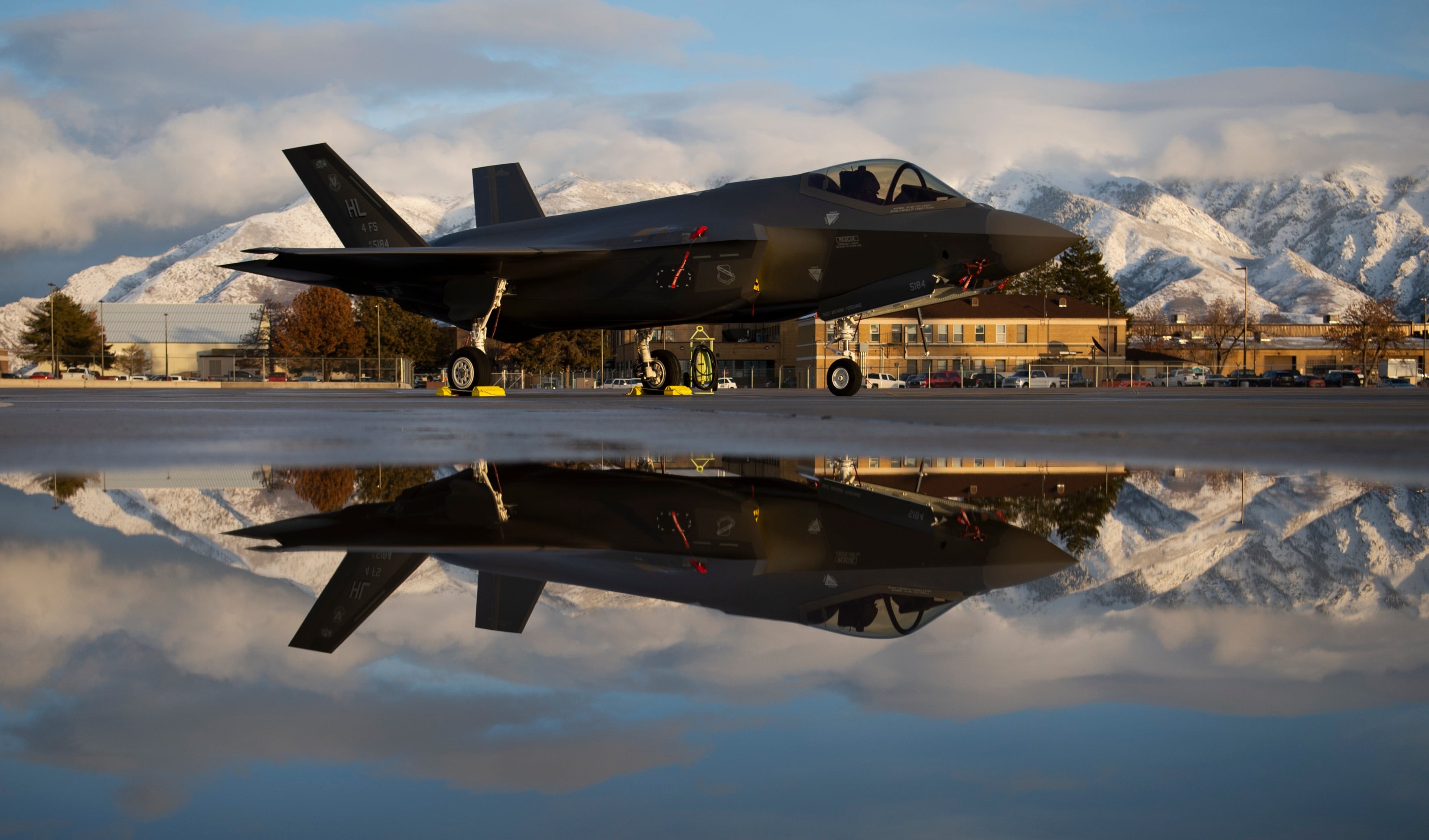The U.S. Air Force dispatched fighters and tankers to Kallax Air Base, in Lulea, Sweden, late last week to participate in an air exercise aimed at defeating enemy air defenses, according to an Air Forces Europe news story.
The looming proliferation of air defense systems, including sales of the Russian-made S-300 and S-400, means that allied pilots must prepare for the possibility of fighting in future airspaces unlike anything they faced in the permissive environments of Afghanistan and Iraq.
Airmen and F-16C Fighting Falcons from the 157th Fighter Squadron out of McEntire Joint National Guard Base, Columbia, South Carolina, arrived in the region Thursday for the first day of Arctic Challenge Exercise 19 taking place throughout Norway, Sweden and Finland.
“There’s some unique training airspace we don’t get to train with in South Carolina. Being just 50 miles south of the Arctic Circle, the high latitude means nearly 20 hours of daylight. That together with the cool weather, will set us up for some essential training.” said Maj. Shaun Hoeltje, an F-16 pilot from the South Carolina Air National Guard, in an Air Forces Europe news story.
RELATED

Arctic Challenge is a Nordic aviation exercise held every two years with participation from U.S. forces as part of the European Deterrence Initiative.
The European Deterrence Initiative, or EDI, began in 2014 — several months after Russia’s annexation of Crimea — to deter Russian aggression against its neighbors.
The initiative aims to increase the U.S. military’s responsiveness to a crisis on the continent by stockpiling ammunition, fuel and equipment at strategic locations, as well as increasing training opportunities.
This year’s exercise is intended to more closely resemble a flag-level exercise, USAFE said in its statement. Flag-level exercises typically provide scenario-based training in realistic environments to prepare allied forces to tackle enemy defensive systems.

“The SEAD [suppression of enemy air defenses] mission, suppression of enemy air defenses, is a fairly unique mission in the Air National Guard," Hoeltje said in the release. “Practicing air-to-air and air-to-ground tactics with our allied partners is essential to being able to respond to any threat, and ensure global support to operations.”
SEAD missions include the defeat of surface-to-air missiles, anti-aircraft artillery and early-warning radar and command and control nodes that could alert a hostile nations of approaching U.S. aircraft.
Suppressing enemy air defenses is accomplished by either physically destroying the systems or by disrupting them through electronic warfare.
Arctic Challenge will also include participation from Norwegian, Danish, Finnish, French, German, Dutch and British forces, USAFE said in its statement.
RELATED

Airmen from the South Carolina, Massachusetts, Iowa and New Jersey Air National Guard are training across the Nordic region for the exercise this year.
KC-135R Stratotanker aircraft from the 174th Air Refueling Squadron out of Colonel Bud Day Field in Iowa, and the 141st Air Refueling Squadron out of Joint Base McGuire-Dix-Lakehurst in New Jersey will provide refuelling support.
F-15C Eagles from the 131st Fighter Squadron out of Barnes Air National Guard Base in Westfield, Massachusetts, will also fly in the exercise.
The USAFE release said that the exercise will also contribute to discussions about command and control, information sharing, secure communications and scenario development.
Kyle Rempfer was an editor and reporter who has covered combat operations, criminal cases, foreign military assistance and training accidents. Before entering journalism, Kyle served in U.S. Air Force Special Tactics and deployed in 2014 to Paktika Province, Afghanistan, and Baghdad, Iraq.





